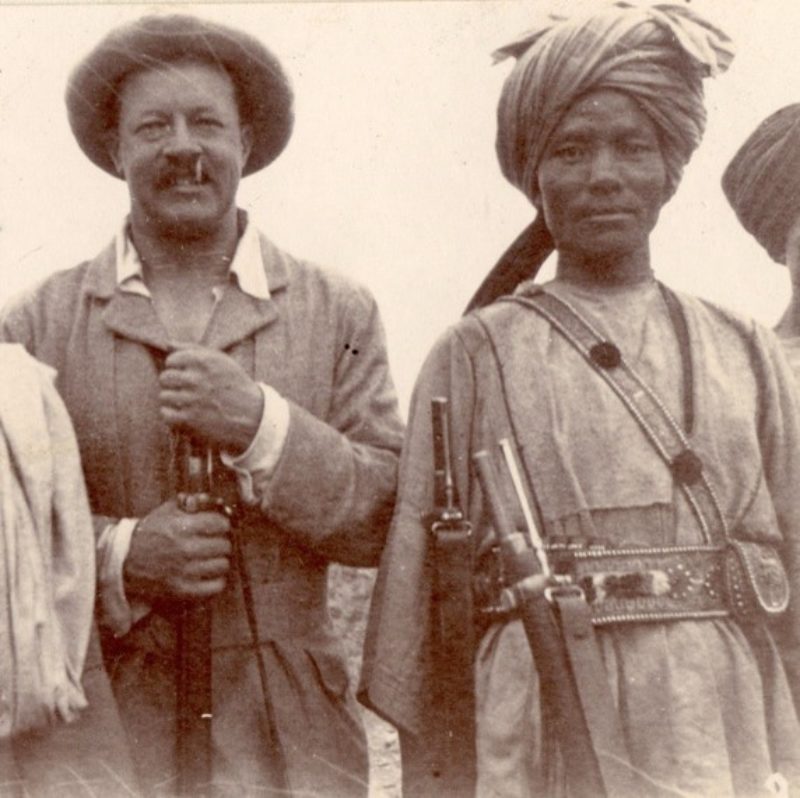Brigadier-General Charles Granville Bruce. 5TH Gurkha Rifles – Mountaineer and Army Officer.

Brigadier-General Charles Granville Bruce. 5TH Gurkha Rifles – Mountaineer and Army Officer.
Charles Bruce, born in Aberdare in 1866 to a wealthy coal-mining family, developed a taste for extreme sports early in his life, boxing, fencing and running down poachers on his father’s land. Joining the Indian Army in 1888, Bruce put his great strength and speed to good use, quickly taking up the local sports of wrestling and climbing. He soon joined the 5th Goorkha Regiment and took a profound interest in the lives and welfare of his Gurkha soldiers, becoming fluent in Nepali.
As he served alongside Gurkhas, he began to recognise their athletic skills and their high levels of endurance, and devised an event that he hoped would serve to put the Gurkhas on more of an even footing with other units of the British Indian Army on the frontier when it came to sports contests – Hill Running.
One of the most famous early hill-climb occurred in 1897 when Bruce took a climbing trip to Scotland, accompanied by his orderly, Havildar (Sergeant) Harkbir Thapa. Whilst visiting the Isle of Skye, Harkbir decided to test his speed on the scree-covered 2600-foot summit of Glamaig Hill, running up and down its over in 75 minutes. When the local Laird found this disbelieving, Harkbir is recorded as having immediately performed the feat again, this time in 55 minutes (a record which stood for the next 100 years).
Bruce did not forget the climbing skills of his Gurkha soldiers, even as he sought higher peaks and opportunities to climb them in the Himalayas. In 1891 he took a Gurkha soldier and climber named Parbir Thapa with him to Switzerland to gain more experience of high-altitude mountaineering and in 1892 and 1893 took several more Gurkhas along with him in his climbing expeditions to the Himalayas. It was on the second of these trips that he first seriously discussed the possibility of climbing Mt. Everest with the explorer and military officer Sir Francis Younghusband. According to Sir Francis, Bruce came up with the idea himself. Throughout the 1890’s and early 1900’s Bruce continued to climb in the Himalayas, gaining experience, and, though his climbs were halted by the First World War, in which he visited the Pyramid of Giza, and was wounded at Gallipoli with 6th Gurkha Rifles in 1915, he managed to gain enough experience to be appointed leader of the first formal British attempt to climb Mt. Everest, aged 56, in 1922.
His knowledge of Nepalese, Tibetan and Indian languages and customs proved invaluable to the expedition, and he treated high-altitude porters and guides as integral members of his team, rather than simple support staff, referring to them as his ‘Tigers’. Three attempts were made to reach the summit and though none were successful the expedition members were met with great acclaim upon their return after the expedition, with members, including a Gurkha soldier, Tejbir Bura, accompanying Bruce, receiving 1924 Olympic Medals for Alpinism and Bruce himself being made president of the prestigious Alpine Club.
In 1924 Bruce was again chosen to lead a second expedition to summit Everest, Bruce led the team for the travel to the Himalayas and the early sections of the climbing, before falling seriously ill with malaria which he had previously contracted whilst tiger-shooting in India, and having to give up command of the expedition. Though he would never lead another major climbing expedition, he continued in his career as a soldier, becoming Honorary Colonel of the Regiment of the 5th Royal Gurkha Rifles (Frontier Force) from 1931-1936 and died following a stroke in 1939.
Bruce’s adventures had a lasting effect on mountaineering, both in general and for the modern Brigade of Gurkhas. The expeditions he led provided valuable lessons for subsequent British attempts, including the first successful ascent in 1953. In 2015 the Brigade of Gurkhas organised an expedition aiming to place serving Gurkha soldiers at the summit of Everest for the first time, in order to coincide with the 200th anniversary of Gurkha service to the Crown. This expedition sadly had to be abandoned due to the 2015 Nepal earthquakes, but was rescheduled and finally successfully achieved in 2017.

